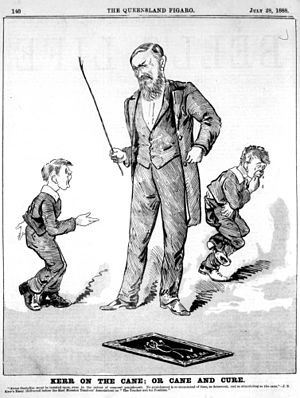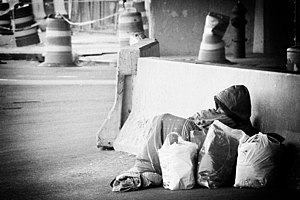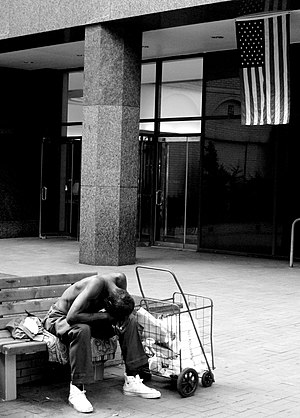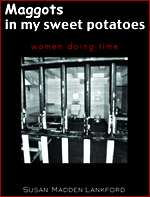
Homeless person in a bus shelter at York and Wellington Streets, downtown Toronto, Ontario, Canada. (Photo credit: Wikipedia)
Experts on homelessness are giving the Canadian federal government credit for utilizing the right approach to helping some of the most vulnerable people in Canada. Ottawa just extended its Homelessness Partnering Strategy (HPS) until 2019 with $119 million per year in new funding.
Dr. Stephen Hwang, a scientist and homelessness researcher at Toronto’s St. Michael’s Hospital, said:
They are to be applauded for moving to a housing-first approach, which is evidence-based. It’s wonderful that the federal government decided to renew the federal homelessness initiative for another five years.
For the next half-decade, Employment and Social Development Canada will concentrate funding on programs that take the housing-first approach to mentally ill and addicted people living on the street. A $110 million, 2008 to 2013 research project led by the Mental Health Commission of Canada showed how getting the most visible and notorious homeless people into permanent housing first leads to greater success down the road treating addictions and mental illness and keeping people off the streets.
Toronto’s Streets to Homes program has moved about 4,000 people into their own apartments since 2005 using a housing-first model. Eighty% of Streets to Homes’ clients remained in their new homes at least 12 months. Edmonton’s housing-first initiatives cut that city’s street population by 20% between 2008 and 2010.
The government expects that 65% of funding to Canada’s 10 largest cities will be spent on housing-first projects. Smaller cities will have to come up with housing-first initiatives for about 40% of their funding and tural communities will have no housing-first requirement.
Since the launch of the HPS in 2007, the government has approved more than $745 million for projects to prevent and reduce homelessness across Canada.
A 2009 poll found that approximately one in nine Canadian adults, or close to three million people, reported that they have either experienced or come close to experiencing homelessness Rates were highest among respondents with income levels less than $40,000 a year (20%) and those 45 to 55 years of age (16%).
In 2010, the number of households on affordable-housing waiting lists was at an all-time high of 141,635 across Ontario, up almost 10% in a year.
Between 2007 and 2011, almost $55 million in federal homelessness funding was invested in 317 projects which directly focused on youth and young adults between 15 and 30 years of age.
Saskatoon Housing Initiatives Partnership is helping reduce, prevent and end youth homelessness in Saskatoon by administering HPS and investing more than $1 million per year into projects targeting street youngsters.
Covenant House Vancouver’s Crisis Shelter program provides street youth a safe place to stay, food, medical attention and the opportunity to develop a plan to move away from the streets and into a better life. In January 2010, 32 new beds opened, bringing shelter capacity to 54 beds. The expansion was funded in part by an $800,000 contribution from the Canadian government through HPS.
However, Catholic agencies that deal directly with mentally ill and addicted street people warn that HPS is no silver bullet, and that federal focus on it may neglect other useful tools in fighting homelessness.
At Good Shepherd Ministries in downtown Toronto, assistant executive director Aklilu Wendaferew looks forward to applying for HPS funding and believes that approach can work, but he warns against thinking we now have a cure for homelessness.
Wendaferew said:
Just relying on one single approach to the problem wouldn’t be wise. Depending on the circumstances, you may have to adopt a number of approaches. Mental health is an issue. Addiction is an issue. And poverty in general is a serious problem.
When the huge North American recession hit at the end of 2008, the numbers of people sleeping in Canadian shelters and dropping in for meals both spiked. This was not a mental health problem but was due mainly to loss of income and poverty.










































































